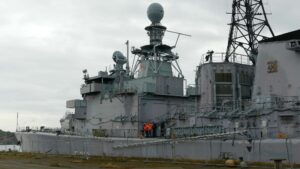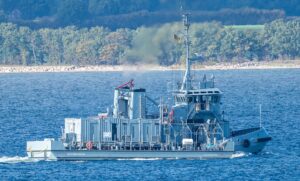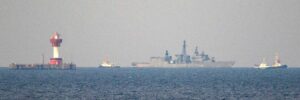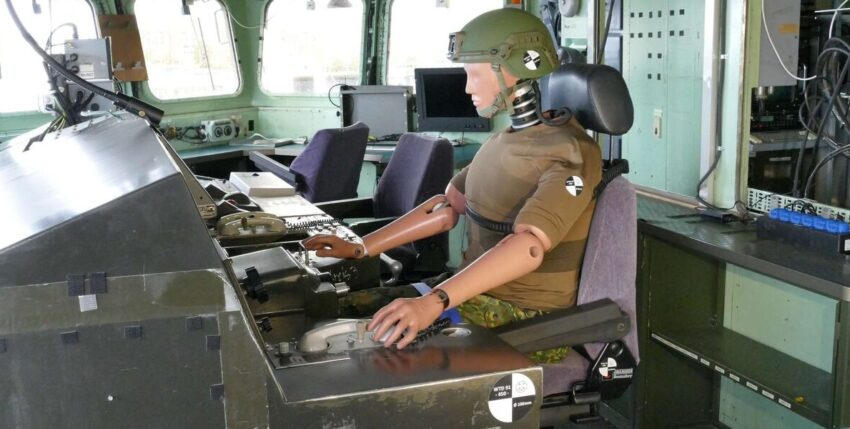The German navy still needs its good old frigate "Karlsruhe" - as a test object for explosive tests. Update from 25.10.2024
The background to the claims is an investigation by the Eckernförde plant in Schleswig-Holstein. WTD 71 (Defence Technology Agency) of the Bundeswehr for ships and naval weapons, maritime technology and research. This wants Findings about the The effect of explosive devices such as sea mines on a ship as a whole, but above all on the crew.

Since its decommissioning the "Karlsruhe" has been prepared for this by the installation of countless sensors, among other things, and is on the necessary Level maintained. In particular, large parts of the drive systems are in operation and regular test runs were carried out. The director of the WTD 71, Frank Menning, explained on bundeswehr.de how important and complex such investigations are, and what the Bundeswehr undertakes to the Effects on the environment as low as possible. Here in extracts:
For the first time, a modern ship is available for blasting in which essential components of the propulsion systems such as diesel engines, turbines, gearboxes and shaft systems are still available. in operational condition. This makes it possible to estimate when and what damage will be caused by the Blasting on these systems real are caused. Comparable blasting was in In the past, these were only carried out on older fighter ships, where these systems were no longer operational. In In the period from 21 October 2024 to 4 November 2024 at the latest, two detonations with 50 kilograms and 175 kilograms of explosives are planned with the ex-"Karlsruhe", in Blasting with increasing amounts of explosives is planned for each of the following years until 2028. Blasting will take place around four and a half kilometres from the coast in the Baltic Sea. In of the former frigate "Karlsruhe" contains many components, the even today in same or comparable Shape can be used. This means that the The results are easily transferable to modern shipbuilding: The The data obtained from the investigation serve so validation of the simulation tools and are therefore an important basis for future ship designs. For the Measurements are in sensors and recording devices in the ship: Several hundred sensors and many kilometres of cable have already been installed. The ship is also being measured using special methods in order to recognise and determine deformations. In addition to the measuring points directly on the ship's structure and engines, "Crash test dummies" of the Defence Technology Agency for Weapons and Ammunition. This data is available for the The impact of shock on people is of particular importance to the medical service, especially as there is only data from the Second World War or from accidents and incidents in other nations. This has direct consequences for our in ships in service - it is a matter of so for the "life and limb" of our soldiers.
Comprehensive environmental concept
One concern in the fjord is, of course, the environment: the effects of the blast wave on the Although the environmental impact is extremely short-lived, according to Menning, it has a significant organic pollutant effect. A comprehensive concept was drawn up to protect the environment. In addition to a double air bubble curtain, this also includes the Harbour porpoise deterrence for the duration of the investigations. Several additional ships will be deployed for this purpose alone. The Scaring takes place from four positions around the bubble veil. The Devices are so and positioned that the Animals from the area around the around the blast site. In addition, from these ships the Optical monitoring of the area. The bubble veil has the Function, the dampen the blast wave of the explosion and so their range significantly. In addition, the test period so The date was chosen to be outside the sensitive period for the harbour porpoise.
During blasting, so-called "explosive-typical compounds" are created, the unavoidable into the environment. Measured against the surrounding water and air masses the However, the quantities are very small and "dilute" quickly. Compared to the environment, these are very small quantities. Through the pressure wave creates a crater on the seabed. Due to the low current velocities in This crater can remain in this area for a longer period of time. This change in the Shape of the However, there is no known harmful influence on the seabed.












